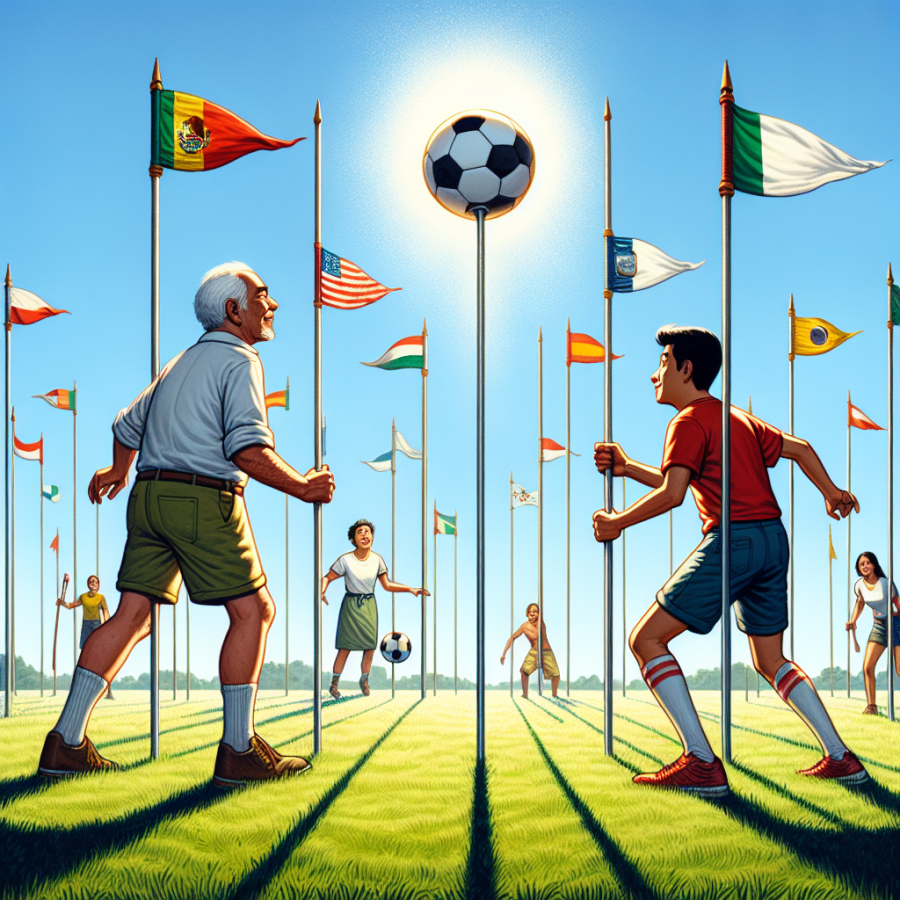Cultivating Creativity on the Field: How Calvinball Champions Spontaneity
In a world where sports often follow strict rules and structured play, Calvinball stands out as an oasis for the creatively inclined. This whimsical game, originating from the beloved comic strip "Calvin and Hobbes" by Bill Watterson, champions the power of spontaneity, allowing players to design the rules as they go along, ensuring no two games are ever the same. The essence of cultivating creativity on the field can be understood by exploring the ways in which Calvinball players embrace unpredictability and innovation.
At the heart of Calvinball is the premise that rules are made to be created and broken. Unlike other sports, where the objective is often clear-cut, Calvinball's only consistent rule is that it cannot be played the same way twice. This compels players to engage in creative thinking and negotiation, frequently altering the game mechanics to enhance the fun and challenge. A match might start with a simple goal of scoring points but can quickly evolve to include obstacle courses, tag-style pursuits, or even elaborate treasure hunts.
The art of donning the Calvinball masks serves to illustrate a transformative moment in gameplay. These masks are not just whimsical accessories; they symbolize the embrace of a new persona, one that is unbound by the constraints of the outside world and free to express imagination without inhibition. Wearing the mask gives players permission to shed their everyday identities and immerse themselves fully in the game's ever-evolving universe.
Moreover, the playing field itself is a canvas for creativity. There are no fixed boundaries as long as all players agree. The game can sprawl across backyards, parks, and even change environments mid-play. Boundaries can be physical, such as trees or park benches, or fantastical, only limited by participants' collective imagination. The ground might be lava in one zone and a safe haven in another, changing the dynamics and demanding swift adaptation from players.
Equipment in Calvinball is similarly fluid. A football might serve as the primary ball until someone decides that a frisbee offers a more challenging twist. Personal belongings can become integral components of the game—whether it's a hat that doubles as a 'power-up' or a backpack that serves as a makeshift goal. This invites players to look at everyday objects with a fresh perspective, recognizing their potential for recreation.
The lack of a predetermined objective in Calvinball could be its most freeing aspect. Players determine their own goals and victory conditions, which can, at any point, be revised for fairness or enjoyment.
Read also:
Mastering the Slopes and Skis: The Nordic Combined Challenge
Unraveling the Rules of Calvinball: A Game with Infinite Possibilities
Calvinball, a game originating from the timeless comic strip "Calvin and Hobbes" by Bill Watterson, operates on a foundation of boundless creativity and spontaneity. Rather than adhering to a static set of established rules, the game is distinctly characterized by its ever-evolving structure, in which players invent new regulations and objectives as the play progresses. The essence of Calvinball is the art of improvisation and the celebration of imagination, making it a metaphoric playground for exploring the dynamics of game design, social interaction, and personal expression.
At its core, Calvinball defies the conventions of traditional competitive sports. There are no fixed teams, no standardized playing fields, and no universal scoring system. Each match is a unique experience, guided solely by the whims and fancies of the participants. The game begins with a rudimentary setup involving a ball of any kind, and from there, participants propose and agree upon successive layers of rules, which can change at a moment's notice.
One element central to the game is the concept of the 'score.' While typical games have a clear point system, Calvinball's scoring metrics are deliberately obscure and nonsensical. A player might declare themselves the winner with 'Q to 12,' another might trail with 'eleventeen points,' or score could be kept in terms of 'oodles' or 'blemflarcks.' The score not only adds to the humor but also reinforces the idea that the game's objective is not competition but rather pure enjoyment and creativity.
The 'Calvinball field' is another variable that intentionally lacks definition. The environment can transform on a whim: trees become bases, bushes mark invisible boundaries, and garden hoses delineate zones with specific attributes or effects on gameplay. At any point, a new terrain feature can be introduced. Players might establish a 'Mount Everest' area, where one must mimic a mountain climber's struggle, or a 'Bermuda Triangle' zone leading to unpredictable teleportation to different field locations.
Equipment in Calvinball is as unpredictable as the rules. Aside from the mandatory ball, players may introduce a plethora of random items like wickets, hoops, flags, or even cardboard boxes, each with its own set of regulations. These items can appear and disappear between games, rounds, or even during gameplay. For instance, a 'Vortex Box' could be placed on the field to warp players to a different game dimension, with an entirely distinct rulebook.





